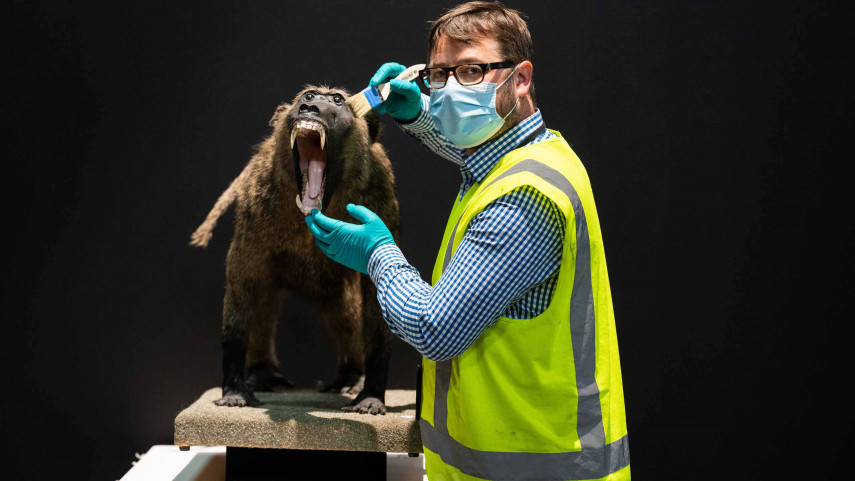
Stuffed specimens on show for summer

Share this story
Some animals rarely seen in Christchurch are coming out of hibernation to spend the summer at Canterbury Museum.
The Museum’s new summer exhibition, Fur, Fangs and Feathers is showcasing taxidermied (or stuffed) animals from the collection that the museum has amassed since it opened more than 150 years.
Taxidermied animals are a much-loved part of the Museum’s permanent displays, but many more creatures are closeted in the Museum’s storerooms.
Fur, Fangs and Feathers is a chance for some of these lesser-spotted specimens to emerge from hibernation to be seen by the Canterbury public. The animals come from all over the world and range in size from the tiny grey squirrel to the hulking Arctic muskox. There are lions, bears, apes, antelope and many more animals.
Visitors will learn where these creatures live, how they behave and the conservation issues they face.
Dr Paul Scofield, the Museum’s Senior Curator Natural History, says the exhibition is a chance for Cantabrians to meet animals they might never have seen – or even heard of – before.
“The Museum has a fantastic collection of taxidermied animals but we just don’t have the space to display them all. I’m really looking forward to showing off a few of the more unfamiliar faces,” he says.
“The specimens are obviously fun to look at, but they also have some valuable lessons to teach us about conservation and the natural world.”
The Museum has collected taxidermied animals since it opened. In the nineteenth and early twentieth centuries many animals were shot for sport or trapped to be displayed in homes or museums.
These days it is very rare for an animal to be killed for a museum display, but museums do collect animals that have been accidentally killed or died of natural causes.
Fur, Fangs and Feathers is on from 18 December until 27 March. Canterbury Museum is open every day over the summer (except Christmas Day) from 9am to 5.30pm.
Pictured above: Canterbury Museum registrar Scott Reeves cleans a baboon for the exhibition.
